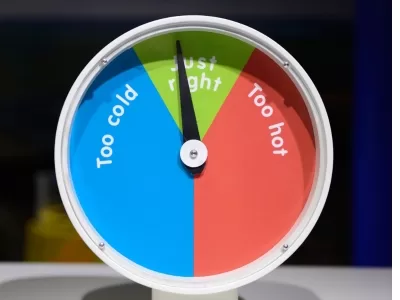The solar panel temperature coefficient is an essential factor to consider when investing in a solar energy system. It offers crucial insights into the way temperature changes influence a solar panel’s efficiency and output. We will explore the importance of the temperature coefficient, how it works, and how to minimize its impact on your solar panels’ performance.

Importance of Temperature Coefficient
Effects on Performance
Solar panels have the remarkable capability to capture sunlight and transform it into electricity. However, as the panels absorb sunlight, they also generate heat, which can have a significant impact on their performance. The temperature coefficient measures the effect of this heat on the solar panel’s power output. A higher temperature coefficient means that the panel’s performance is more susceptible to changes in temperature, leading to decreased efficiency and power output as temperatures rise.
Extending the Lifespan
Understanding the temperature coefficient is essential for prolonging the lifespan of your solar panels. High temperatures can cause the panels to degrade more quickly, ultimately reducing their overall lifespan. By considering the temperature coefficient when selecting solar panels and taking steps to minimize temperature effects, you can help ensure that your solar energy system remains efficient and effective for years to come.
How Temperature Coefficients Work
Types of Coefficients
There are two primary types of temperature coefficients: the power temperature coefficient and the voltage temperature coefficient. The power temperature coefficient measures the impact of temperature changes on the overall power output, while the voltage temperature coefficient measures the effect on the panel’s voltage output.
Key Factors
Various factors impact the temperature coefficient. These include solar cell type, panel construction, and operating environment. Monocrystalline and polycrystalline panels typically have a lower temperature coefficient than thin-film panels, making them less affected by temperature changes.
Measuring Temperature Coefficient
Laboratory Testing
To measure the temperature coefficient of a solar panel, manufacturers often use laboratory testing. These tests involve exposing the panel to a range of temperatures and measuring the change in output. Calculations then use this data to determine the temperature coefficient, usually expressed as a percentage change in power output per degree Celsius.
Real-World Conditions
It is essential to consider that laboratory testing may not always accurately represent real-world conditions. Factors such as shading, dust, and humidity can all impact a solar panel’s performance, making it crucial to account for these variables when selecting a solar energy system.
How to Minimize Temperature Effects
Proper Ventilation
One effective way to minimize the impact of temperature on solar panel performance is to ensure proper ventilation. By allowing air to flow freely around the panels, you can help dissipate heat and maintain lower temperatures. This can be achieved through adequate spacing between the panels and the roof or by using mounting systems that promote airflow.
Choosing the Right Panels
Selecting solar panels with a lower temperature coefficient is another crucial step in minimizing temperature effects. Monocrystalline and polycrystalline solar panels generally have a lower temperature coefficient than thin-film panels, making them a better choice for areas with high temperatures or significant temperature fluctuations.
The Future of Solar Panel Technology
New Materials
Solar technology advancements drive research on materials to reduce temperature impact on solar panel performance. Perovskite solar cells, for instance, show potential with higher efficiency and lower temperature coefficients than conventional silicon-based panels.
Innovative Designs
In addition to new materials, innovative designs that improve heat dissipation are being developed. These designs may include advanced mounting systems that promote airflow or even solar panels with integrated cooling systems, further reducing the impact of temperature on performance.
Conclusion
Understanding the solar panel temperature coefficient is essential for maximizing the efficiency and lifespan of your solar energy system. By selecting panels with a lower temperature coefficient, ensuring proper ventilation, and staying informed about advancements in solar technology, you can enjoy the benefits of clean, renewable energy while minimizing the impact of temperature on your solar panels’ performance.
Frequently Asked Questions
What is the solar panel temperature coefficient?
The temperature coefficient is a measure of how a solar panel’s efficiency and output are affected by temperature changes.
Why is the temperature coefficient important?
The temperature coefficient is important because it provides valuable insight into a solar panel’s performance and lifespan, helping you make informed decisions when selecting and maintaining your solar energy system.
How can I minimize the impact of temperature on my solar panels?
To minimize temperature effects, ensure proper ventilation around your panels, choose panels with a lower temperature coefficient, and stay informed about advancements in solar technology.
What are some new materials being developed for solar panels?
One promising new material being developed is perovskite, which has shown high efficiency and lower temperature coefficients compared to traditional silicon-based panels.
How do innovative designs help reduce the impact of temperature on solar panel performance?
Innovative designs may include advanced mounting systems that promote airflow or integrated cooling systems, which can help dissipate heat and maintain lower temperatures for optimal solar panel performance.